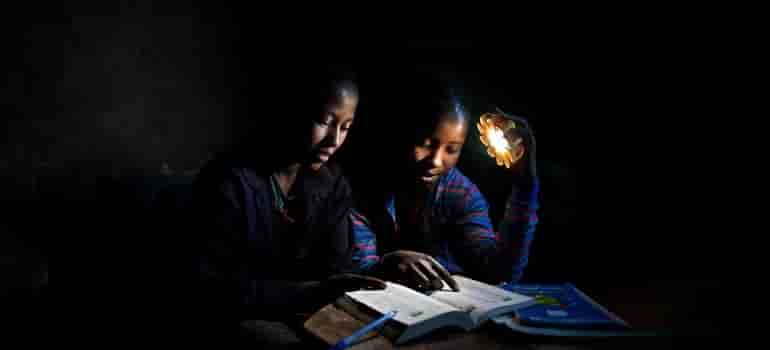
Author: Vandana Chavan
The government has recently put efforts to build upon the existing electricity grid infrastructure to enhance clean energy access to all households in the country. This is expected to be complimented by lowering kerosene PDS allocation and thereby reducing the government’s burden of kerosene subsidies and households’ dependence on subsidised kerosene. Why then does a substantial segment of the population continue to depend on kerosene for their lighting and cooking needs?
It seems that many households continue to rely on kerosene fuel because they are connected but electricity is not always available. An effective strategy to curb kerosene dependence, for the benefit of households and the government budget, is to switch to solar or cleaner forms of power as back-up. Off-grid solar products are increasingly cost-effective and provide a cleaner, brighter alternative to kerosene. Technologies such as solar home systems and mini-grids offer the benefit of electricity in addition to lighting, contributing towards universal electrification.
But we don’t see this reflected in budgetary planning. The interim budget of Government of India has allocated a kerosene subsidy of INR 4,489 crores for the FY 2019-20, a reduction of only INR 61 crores from the revised estimates of FY 2018-19. This is despite several states declaring themselves ‘kerosene-free’. This also goes against the earlier trend when the Government halved the kerosene subsidy from INR 8,804 crores in FY 2017-18 to INR 4,550 crores in FY 2018-19.
And despite significant progress in household electrification, as claimed by the Finance Minister in his Budget speech, it is important to note that the SAUBHAGYA scheme for household electrification is for ‘willing households’ only and 24X7 supply still remains a distant dream, given the financial woes of power sector generators and distribution utilities. The 2017 Draft National Energy Policy also states that close to 26 per cent of the rural households are still inclined towards kerosene-based lighting solutions. This data provided by the Government itself is a telltale sign of the stagnation in the reduction of kerosene demand in the country.
At the same time, there has been a little more than 2 per cent increase in the budgetary allocation of the Ministry of New and Renewable Energy responsible for the promotion of renewable energy technologies. The budgetary allocation for the Off-Grid/Distributed and Decentralized Renewable Power programme has, in fact, seen a reduction from INR 940 crores in 2018-19 (RE) to INR 688 crores (BE) in 2019-20. Support from the National Clean Energy Fund was also withdrawn as the NCEF was subsumed in the GST revenue compensation fund to the states.
New thinking and planning—to shift subsidies from kerosene to solar—can be initiated, so that the money saved from kerosene can be transferred to strengthen off-grid solar and renewable energy in energy-poor areas.
Kerosene is not a good fuel for energy access. It is expensive for the government to support and bad for households, creating indoor air pollution that can have serious health impacts. It also gives low-quality light, limiting educational and income-generating opportunities for households.
Solar energy performs much better and is cheaper over the long-run. The International Institute for Sustainable Development (IISD), an independent research organization, has calculated that over two years, the average cost per household for subsidized kerosene is around INR 5000 (INR 2,000 paid by the household and INR 3,000 in subsidies). In comparison, an entry level solar lantern, costs only INR 500 while a solar home system costs around INR 3500. The solar home system would actually last well over five years, leading to much greater savings for both households and the government, as well as delivering electrical power in addition to lighting.
The only problem is the high up-front cost of solar products: households have to make one large purchase, and afterwards the solar panels generate energy for free. This makes uptake difficult for poor households—and this is where targeted government support could make a huge difference in delivering clean and affordable energy to all citizens. Assistance could be provided to manufacturers to deliver cheaper products, or to consumers to help them purchase equipment or financial institutions to reduce the cost of credit and insurance. The necessary funds can be sourced from declining kerosene subsidies, which have saved the government INR 86,560 crore over the past four years, with more savings likely in the future.
MORE TO READ: After LED what? Welcome to world of connected lighting
Unlike kerosene, off-grid solar power is not linked to world prices. If the kerosene subsidy were to be phased out before an alternative is in place, India’s most vulnerable families would be exposed to volatile markets. When crude oil prices peak, as seen this fiscal, many families would be unable to afford basic lighting.
MORE TO READ: “Just do it”: Solar remains the ‘beating heart’ of the energy transition
The responsible path is for the government to switch subsidies from polluting, inefficient and expensive kerosene to clean, stable, solar power. This is will help de-link the domestic energy market from unpredictable international prices, extend electricity access and improve health outcomes. A kerosene-solar subsidy swap makes sense economically and morally.

About The Author
Vandana Chavan is a Member of Parliament in Rajya Sabha. She has worked extensively on issues of climate change and renewable energy in India and globally.
Views expressed in this article are those of the author and do not necessarily reflect those of the editors or publishers.
If you really appreciate our work and love our cherry picked stories
Follow us on Twitter , Like Us onFacebook and Subscribe ourYouTube Channel.

